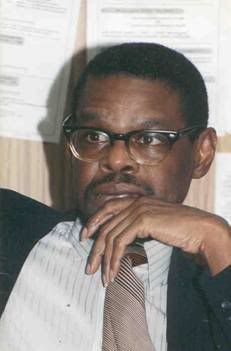By Eddie Griffin
Tuesday, November 02, 2010
A young school girl sat beside her grandmother and watched intently as my 10-year old grandson manipulated a wave pattern on the screen before an audience. She was about the same age.
I had promised to present a virtual classroom in Science and Math at the October 31, 2010 IDREAM, ILEARN, IWIN Summit in Fort Worth.
Edwin Russell Jr., my grandson, was dying to assist me. He is a fifth grader attending my old alma mater, I.M. Terrel, and some of his school mates were in attendance; unfortunately, though not in his session.
For practice, I had taught him one exercise: How to manipulate the color waves in a light spectrum beamed upon a molecule. When the wave pattern coincided with the graph, the molecule would explode:
KABOOM!
The young girl’s eyes lit up with a starry twinkle, and a toothy grin popped up on her face. She almost leapt out of her chair.
I wondered: Had I done the experiment, no doubt she would have shown lesser interest. After all, a crusty old professor demonstrating in front of a classroom is nothing compared to someone her own age. It's a peer-to-peer motivational phenomenon. That was why I allowed my grandson to do the demo.
Little Ed had boasted like a ham promoting a circus act. To everyone he met that day, including Superintendent Dr. Melody Johnson, that he would “split a molecule with light waves”. That’s how confident he was.
And, when it actually happened in the classroom, the little girl watching, along with her grandmother, literally jumped with excitement. She wanted to try it for herself. So, I gave her the stage, with grandmother and others watching on.
“Come on, baby, you are at 80%”, her grandmother cheered. “You’re at 90%”.
But not so fast, ladies and gentlemen. This was not a game, but a simulation of an actual experiment conducted at the University of Colorado at Boulder. Before this child could perform this operation, she had to learn some other things in the demonstration, stuff for which she had little or no interest and stuff over her head, like Algebra, Geometry, and Trigonometry.
She had to learn how to pick up subatomic particles and build an atom, first a Hydrogen atom; and then by adding colored balls representing protons, neutrons, and electrons, go up the Chemistry periodic chart, and how to read the new atom's mass.
Here the boy deviated from instruction and created an atomic cloud. Losing his focus, and venturing out into curious territory, just seems to come natural to a Whiz Kid, but a little frustrating for grandpa.
But from an instructor's perspective, I missed nothing, in terms of audience facial expressions, body language, and every questions, both from parents and child. This is what dictated the sequence of my presentation. With the arsenal of math and science tools, I was prepared for any age group, and prepared to move on where interest was lacking.
“What is Velocity?” the little girl asked, as we demonstrated balls of different masses colliding together. Her grandmother was there to explain that is was “speed”, and the simulation program allowed me to show the Velocity vector. It reminded me of a question asked by my grandson the weekend before: “What is a Plane?” It was an indication to me that something was soaking in.
It was fast-paced and inundating. It was not meant to be grasped all at once. The object here was, not mastery of a particular subject matter, but rather exposing kids to the next horizon in math and science, and provide parents with free online resources that they could visit over and over again.
We even had time to break for a Moby and Tim cartoon: How to make a 3-D and 2-D cartoon. The little girl was familiar with the characters, Moby and Tom, and the educational animations.
We visited the Science Lab simulations and produced electricity that lit up a light bulb. It was the Faraday waterwheel demonstration, where water pouring over a waterwheel spun a magnet that generated electrical energy and cause the bulb to light up.
Besides learning how to manipulate objects and waves, the child had to have an intuitive understanding of Graphs. Electricity produced a wave pattern, similar to Trigonometric sine and cosine wave. Using the Fourier Wave experiment, we created periodic waves and listened to the sound of wave packets, which were similar to adjusting the bass and treble on the car radio. Therefore, adjusting light waves was like adjust radio waves, and by tweaking light waves in a spectrum directed into a molecule, at the subatomic (nano) level, the student could cause the molecule to explode.
The grandmother who, at first, came through the door at the end of first session, came in asking, “What is all this wave stuff?” Now, here she was, cheering on her granddaughter inched up to 91%, 92%, 93% in coinciding the wave graph. “Come on, baby, you’re almost there.”
Then: KABOOM!
The little girl did it. She had successfully split the molecule, the same as my grandson. Neither understood that this was Quantum Mechanics, the door to molecular engineering.
And, I would be vain to think that I thought these kids Algebra, Geometry, Trigonometry, and Physics, all in one setting. But each child was exposed to new concepts in math and science that will some day come back to them in higher grades. And, even if they cannot remember the math and science involved, they will surely remember their conquest at the console, and not be afraid to tackle these subjects in the future.
Tuesday, November 2, 2010
Subscribe to:
Comments (Atom)


